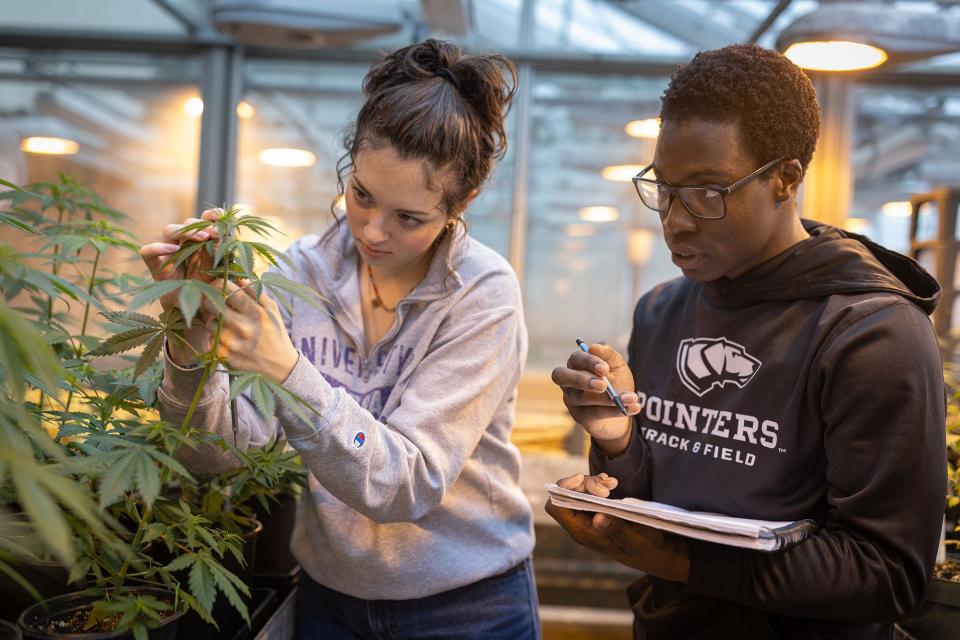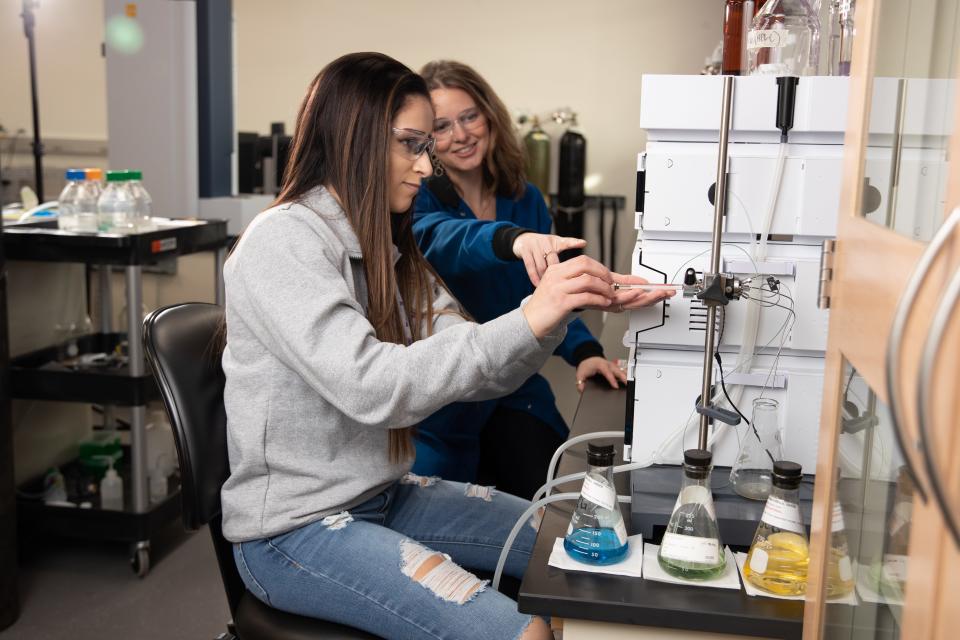Could cannabis hemp and alfalfa solve PFAS contamination? Wisconsin researchers hope so
MADISON – Researchers at the University of Wisconsin-Stevens Point are turning to a more natural way of solving the issue of "forever chemical" cleanup: plants.
A team at the university was awarded a $175,000 grant over two years to study whether certain types of plants can be used to remediate areas with heavy concentrations of PFAS, a process known as phytoremediation.
The plants could be used to suck up the contamination from the ground, storing it in their leaves and stems. The plants could then be incinerated or otherwise destroyed, reducing the amount of disturbance to the soil in contaminated areas.
"Traditionally, PFAS has been just excavated from soils and then large amounts of soil are transported off-site to some disposal area. We can concentrate that into a lot smaller mass through the use of plants," said Shannon Riha, an associate professor in the chemistry department at UWSP, and a researcher on the project. "That's a lot less that we have to either transfer off to a disposal site."

Brian Barringer, an associate professor and the chair of the Biology Department, as well as a researcher on the project, said by having plants suck up the contaminants and then burning them, the reduction in additions to landfills could be brought down by up to 95%.
"It's exponentially less than the soil," he said.
Wisconsin communities across the state are now looking for effective ways to clean up PFAS, as more contaminated sites have been found. The compounds, known for their ability to move quickly through water, carry health risks and are notoriously expensive to clean up. While water filtration systems are able to quickly remove the chemicals from water, cleaning up contaminated soil is much more difficult, mostly resulting in the removal of soil from an area to be taken to a hazardous waste landfill.
More: Gov. Tony Evers calls out Republicans over 'breathtaking' inaction on PFAS
The team of six researchers will start their work this year, with the help of undergraduate students from UWSP, who will be involved with the project year-round, from start to finish.
They'll start by growing plants in a greenhouse during colder months, testing how plants in pots of contaminated soil are able to draw PFAS up out of the soil.
Then they're hoping to move outdoors during the summer months, planting in areas with known contamination and testing their ability to capture PFAS and store them. They're looking at the list of contaminated sites kept by the Department of Natural Resources, such as airports, but they've also been contacted by companies outside of Wisconsin who want to see if phytoremediation would work on their properties.
Researchers to use cannabis hemp and alfalfa
The researchers are going to start with two types of plants in the first few years: cannabis hemp and alfalfa.
Both plants are known for their ability to take up contamination and tend to thrive in Wisconsin's climate.
"Cannabis is known for being a good phytoremediator. Whether it works well for PFAS, we're not sure yet. We have reason to suspect that it will. Alfalfa has been used successfully as a phytoremediator in other studies, and so we're hoping that it works well with PFAS," Barringer said.
Alfalfa and hemp are also fast rotation crops, Riha said, which means that once planted, they grow quickly, so the researchers won't have to wait long to see if the plants are remediating soil. Several crops could be planted over the course of a growing season, potentially speeding up the process of cleaning up the soil, though it will still likely take several growing seasons to see results.
More: Senate passes 'forever chemical' bill despite concerns over limitations to DNR
Alfalfa was chosen because of past research, but hemp was chosen because the plant has been known to take up contaminants such as heavy metals. Though the cannabis plants used for the study won't produce THC, cannabis plants that do often have to undergo testing for heavy metals, to ensure they're not passed on to customers in products such as edibles.
"Cannabis is a good phytoremediator, so it'll it'll take these toxins up whether you want it to or not, and then it ends up in the in the tissues of the plants and potentially in the products that you make from those tissues," Barringer said.
Phytoremediation has been used to remediate land contaminated with other chemicals. In Menomonee Falls, trees planted near the old Boundary Road Landfill are being used to suck up the contamination seeping out of the landfill as it moves with run-off and groundwater.
For contaminants like PFAS, phytoremediation could be an attractive option because it could be more eco-friendly, Riha said.

"I think many of us are just looking for any sort of remediation strategy. I don't think there is one great solution out there quite yet," she said. "Whether it is we will be the gold standard, you know, has to be determined, but I think a lot of people are looking at various strategies, and we took the eco-friendly route."
Barringer said there could even be a financial incentive to using phytoremediation, and in particular, hemp. Because the plant has strong fibers and can be turned into products such as rope, which in turn could potentially be sold.
"If it turns out we can use this crop as a phytoremediator and turn a profit at the same time for a farmer, that would be fantastic," Barringer said.
"But the fact that this is also a potentially eco-friendly way to deal with some of the toxins in our soil is a pretty attractive deal."
More: Rural Wisconsinites see farm pollution, PFAS as big threats to clean drinking water, UW survey finds
About PFAS
PFAS, or per- and polyfluoroalkyl substances, are a family of man-made chemicals used for their water- and stain-resistant qualities in products like clothing and carpet, nonstick cookware, packaging and firefighting foam.
The family includes 5,000 compounds, which are persistent, remaining both in the environment and human body over time. The chemicals have been linked to types of kidney and testicular cancers, lower birth weights, harm to immune and reproductive systems, altered hormone regulation and altered thyroid hormones.
The chemicals enter the human body largely through drinking water. PFAS have been found across Wisconsin.
Laura Schulte can be reached at leschulte@jrn.com and on X at @SchulteLaura.
This article originally appeared on Milwaukee Journal Sentinel: UW-Stevens Point research tests whether plants could clean up PFAS

